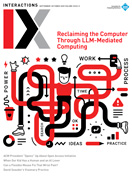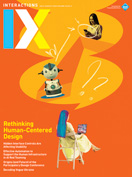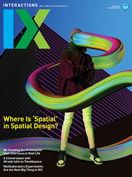Authors:
Nour Halabi, Evan Jones, Pejman Mirza-Babaei
Games, as a platform, have the power to transport us to different worlds, providing unique and captivating experiences. In the realm of virtual reality, this potential is amplified, offering a level of immersion that was previously unimaginable. What makes VR even more exciting is the possibility of gesture-based interactions, where the players' bodies become the controllers, bridging the gap between the virtual and physical worlds. In this article, we delve into the realm of gesture-based VR interaction design, exploring the experiences they unlock and how they have changed not only the gaming landscape but also the interaction design space.…
You must be a member of SIGCHI, a subscriber to ACM's Digital Library, or an interactions subscriber to read the full text of this article.
GET ACCESS
Join ACM SIGCHIIn addition to all of the professional benefits of being a SIGCHI member, members get full access to interactions online content and receive the print version of the magazine bimonthly.
Subscribe to the ACM Digital Library
Get access to all interactions content online and the entire archive of ACM publications dating back to 1954. (Please check with your institution to see if it already has a subscription.)
Subscribe to interactions
Get full access to interactions online content and receive the print version of the magazine bimonthly.






